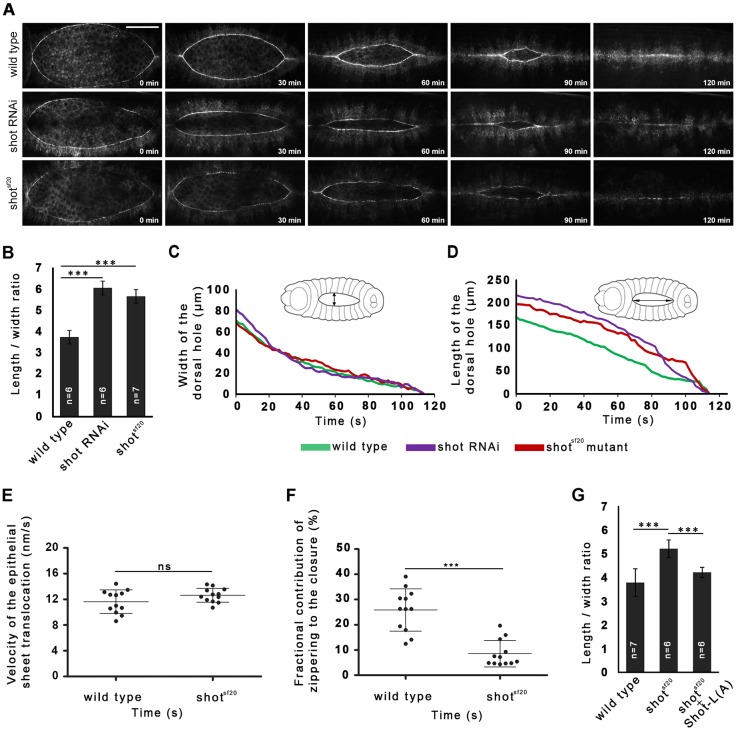Fig. 1.
Shot is required for efficient zippering of the dorsal hole in Drosophila embryos. (A) Dorsal closure phenotype in wild-type, shot RNAi and shotsf20 mutant embryos. The first cell row of the epithelial sheets is highlighted by Zasp52ZCL0432–EGFP. Scale bar: 50 µm. (B) Quantification of the zippering efficiency of the dorsal opening in wild-type, shot dsRNA-treated, and shotsf20 mutant embryos. The length-to-width ratio of the dorsal opening when it is at a 30 µm width is shown. (C,D) Graphs showing closure kinetics of the dorsal hole in a wild-type (green), a shot dsRNA-injected (purple) and a shotsf20 mutant embryo (red). For each category, data from an individual representative embryo are shown. (C) Width of the dorsal hole over time for the indicated embryos, representing the maximal distance between the converging epithelial sheets (double arrow). (D) Length of the dorsal hole over time for the indicated embryos, representing the maximal distance between zippering ends (double arrow). (G) Targeted expression of Shot-L(A)–GFP in the dorsal epithelium rescued the zippering defects of the shotsf20 null mutant embryos. Mean±s.d. is shown for all quantitative data. ***P<0.001; ns, not significant (t-test).

